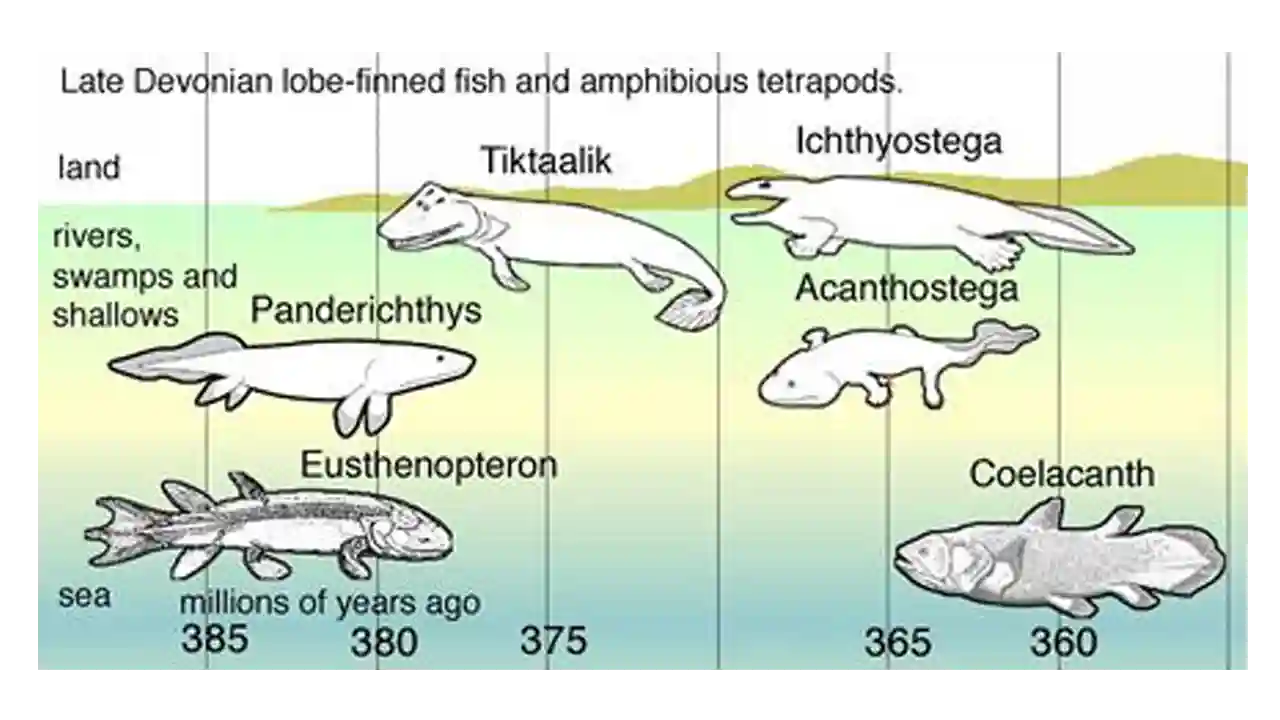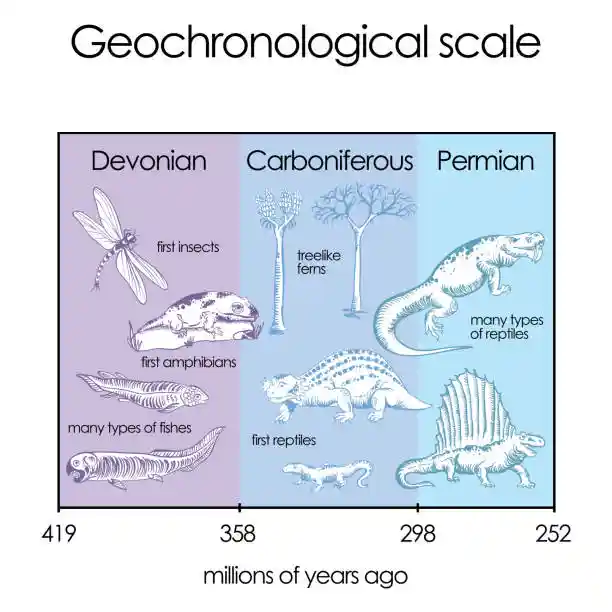History of the Fish: When and where did fish come to earth?
As per a rough definition by Nelson, 1994; "Aquatic vertebrates with gills and with limbs in the shape of fins." Can anybody imagine how the first fish to walk on land? 500,000,000 years ago there were no fish. Fossils show that the first Fish occurred in the Ordovician period, which began about 460,000,000 years ago. But it is not yet known whether the first fish evolved in freshwater or saltwater. In the next period of the Silurian, there were jawless fishes, the most primitive of fishes. Their mouths were a simple opening, suited to feeding on the tiny animals that lay hidden in the mud. During the next period, the Devonian fishes spread throughout the waters of our planet. They were the common animals of the period, which is why the Devonian is sometimes called the age of fishes. During that age jawless fishes and fishes with jaws became abundant. But eventually, the Jawless fishes became extinct because of the evolution of fish with jaws. Jaws allowed fish to explore various food sources and to feed more efficiently.
Early fishes with jaws are called placoderms. The jaws evolved from a set of gill arches that were present in the jawless fishes. Gill arches are the bony supports of the gills. There were quite a variety of Placoderms in these ancient times. Some lived in mid-water, some at the bottom. One group had tremendous teeth with sharp blades, some were probably 10 meters long. From these Devonian placoderms came our present-day fishes, the sharks, and bony fishes. Sharks have a skeleton of cartilage. Bony fishes have a skeleton of bone. So, it's all about the history of Fish. What were the first fishes? For more details kindly go through with our article.

Evolution of the Fish
Fish evolution does not seem as interesting as saber-tooth tigers, mammoths, and dinosaurs until you realize that they would not exist without fish dating back millions of years. Since fish, the earth's first group of vertebrates provided an evolutionary blueprint which was later developed over a huge amount of time, your great ancestors were small, gentle fish.
The world is home to a variety of fish. These species are found in millions today. Approximately 34,000 types of fish inhabit freshwater and saltwater around the world. Scientists specialize in ichthyology, the study of fishes in detail.
The evolution of these creatures has been complex. At the dawn of life on our planet, the first organisms were found in the water, which consisted of single-celled organisms.
The period called the Devonian period (4.1–3.4 crore years ago) is considered the age of fish. The history of fish can be traced back 45 crore years, evolving numerous times in order to survive in a wide range of aquatic environments. It is interesting to note that terrestrial vertebrates are, in a way, just modified fishes: when fish occupied terrestrial environments, they developed into tetrapods (four-legged).

When fish evolved, they were jawless. Fish without jaws tended to be small and covered in bony structures.
Anciently, the oceans held species of fish such as Haikouichthys, small jawless, armored fish belonging to the Ostracoderm species. around 48 crore years ago, with these species, the vertebral column evolved into what we know today, and the earliest fish appeared nearly a billion years ago.
Approximately 4-23 Crore years ago, a fish known as Spiny Shark first inhabited freshwater. It is believed that it was the first fish in history that had a jaw and backbone.
A Placoderm, which was formerly longer than today's sharks, belonged to this genus. Placoderrm was found on Earth about 41 to 34 crore years ago. They are named for their characteristic covering of dermal, or skin, bones.
Sharks have emerged as the fastest and most fearless predatory fish. Today you can still find some shark fish species.
In most modern fish, the bones mostly remain inside the fish. Such fish are believed to have originated in the Mesozoic Era, which is 22.5 crore years old.
There were more lobe-finned bony fish at the start of time than the ray-finned bony fish we see now. Amphibians are also descended from lobe-finned fish. Eventually, they developed into amphibian legs and lungs from their stump-like appendages and lung-like organs. A bony fish with ray-fins is believed to have formed among the earliest freshwater fishes. Their diversity led to their rise to dominance.
As fish evolved, the gills began to be used for oxygen absorption rather than for filtration of food. Approximately 55 crore years ago, the first fish, the hagfish of today, evolved.
With the progress of evolution, today we can find a variety of shapes and forms of fish. Every fish has its own adaptations that allow them to specialize and become adapted to the specific habitat it inhabits Like Fusiform, Depressiform, filiform, Sagittiform, etc.
There are similarities among the various species of fish. Each of them has a spine, making them vertebrates. Because of their cold blood, they adjust themselves according to the surrounding temperature. Gills are organs that fish use to breathe. Their arms and legs are replaced by pairs of fins. Fishes have scales covering their bodies.
Fish, too, are remarkably diverse. Gobies, one of the tiniest fish, rarely measure more than half an inch. Among the largest fish, the whale shark reaches a length of 50 feet (15 meters) and weighs 20 tons. Typically, a fish is wider at the ends than it is at the middle. Flounders, on the other hand, are incredibly flat. A sea horse resembles a horse on its tail. The eels resemble snakes.
The development of unique features by some fish during millions of years helps them survive. The features are known as adaptations. Anglerfish, for example, carry their own "fishing rod" to catch other fish. There are fleshy, worm-like pieces at the tip of the back fin, which are the "bait." Anglerfish of the deep sea have baits that light up to lure prey.
Evolutionary changes caused fish to possess a complete spinal column, jaws, and an endoskeleton composed of bones rather than cartilage. Freshwater lakes, streams, and oceans are home to fish. Almost all fish are predators, though the animal they eat and how they eat it varies from species to species. Human actions, such as pollution of rivers and overfishing, threaten a number of fish species.